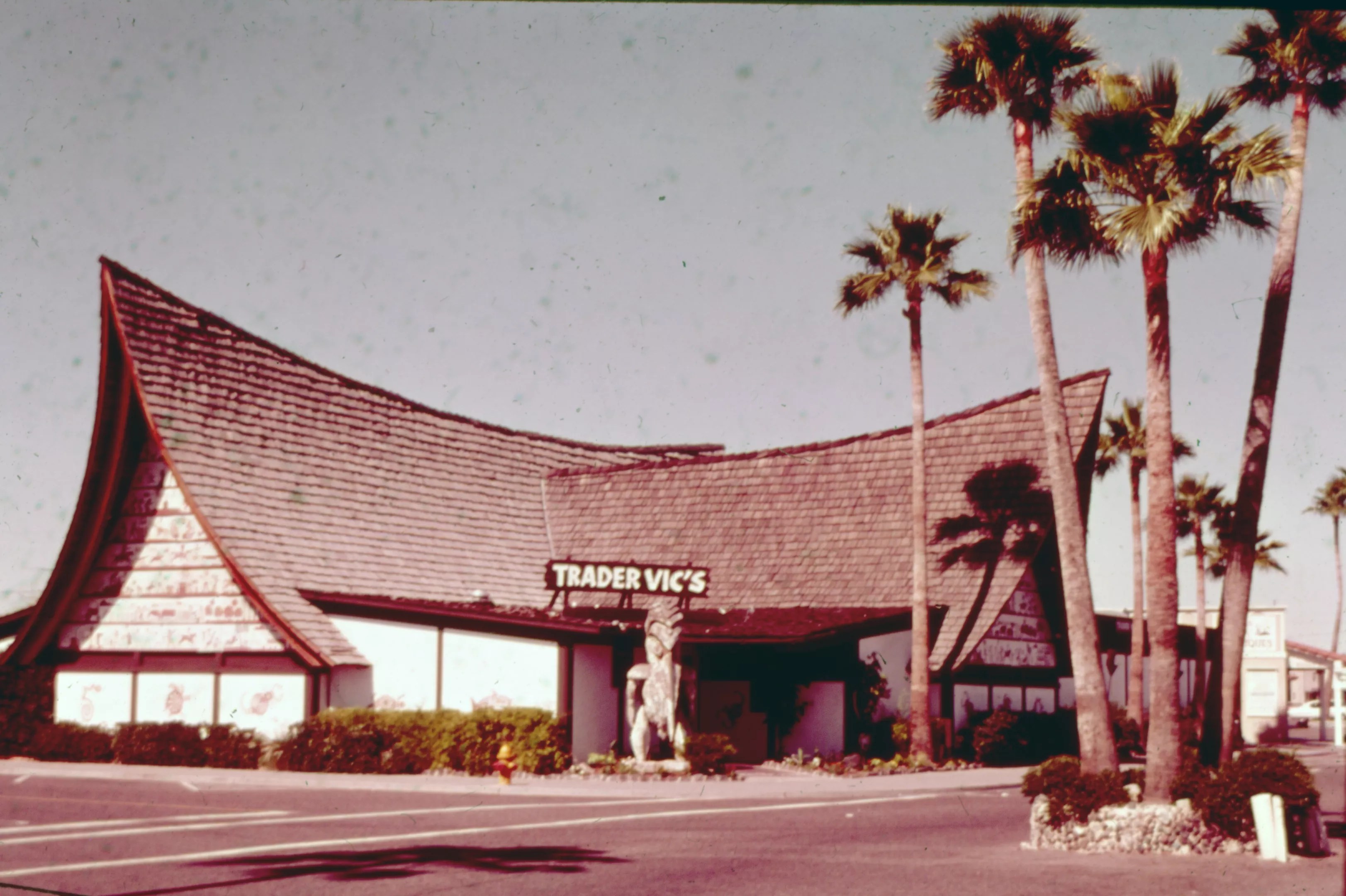
Courtesy of the Scottsdale Historical Society/Scottsdale Public Library

Audio By Carbonatix
While many of the Valley’s bygone restaurants linger in the minds of long-term desert dwellers, to the hordes of new folks moving in, these spots are the stuff of lore.
But reminders remain, from the My Florist sign on McDowell Road to stories of purse stools at Mary Elaine’s and what the Obamas ordered at the old stair-step Macayo’s. The Phoenix area has had some fascinating restaurants.
Don & Charlie’s and Pink Pony fed famous athletes for decades. Designer Glen Guyett made Valley eateries legendary for iconic signs like the one outside Bill Johnson’s Big Apple. The first McDonald’s franchise put up the chain’s original golden arches in central Phoenix.
Their past is part of our present. And we could all use a refresh.
Here’s a look at 20 favorite Valley restaurants that are gone, but far from forgotten.
Barrio Cafe / Unoccupied
2814 N. 16th St., #1205 Along a stretch of 16th Street now filled with great Mexican food, there sits one of the most iconic Phoenix restaurants of recent memory. Barrio Cafe opened in 2002 and was a pioneer of elevated Mexican food in the Valley. Its acclaimed chef and co-owner, Silvana Salcido Esparza, quickly became one of the most well-known names in the Phoenix food scene and her cozy, mural-covered restaurant likewise became a must-visit destination for folks traveling through town, and a staple spot for birthdays, special occasions and celebrations for Phoenix locals. Over the years, Guy Fieri paid a visit, as did former President Joe Biden and former Vice President Kamala Harris.
After a 22-year run, Barrio Cafe closed in 2024. The restaurant looks untouched, with its sign still in place and bright blue paint shining over 16th Street.
Beef Eaters / Tesota
300 W. Camelback Road Beef Eaters was a Britain-themed restaurant, and the dining room certainly looked the part with its chandeliers, white tablecloths, wood-paneled walls and suit of armor. The menu was filled with steak and seafood. Founder Jay Newton built the place in 1961, referring to it as “everything I ever dreamt of in a great restaurant.”
The classic Phoenix restaurant closed in 2006, after 45 years of operation, and sat vacant for seven years, giant sign and all. The area was revamped in 2013 as The Newton, and chef Justin Beckett’s second concept, Southern Rail, moved in. The space has since turned over again, with chef Doug Robson’s globally inspired restaurant Tesota now occupying the Camelback Road digs.
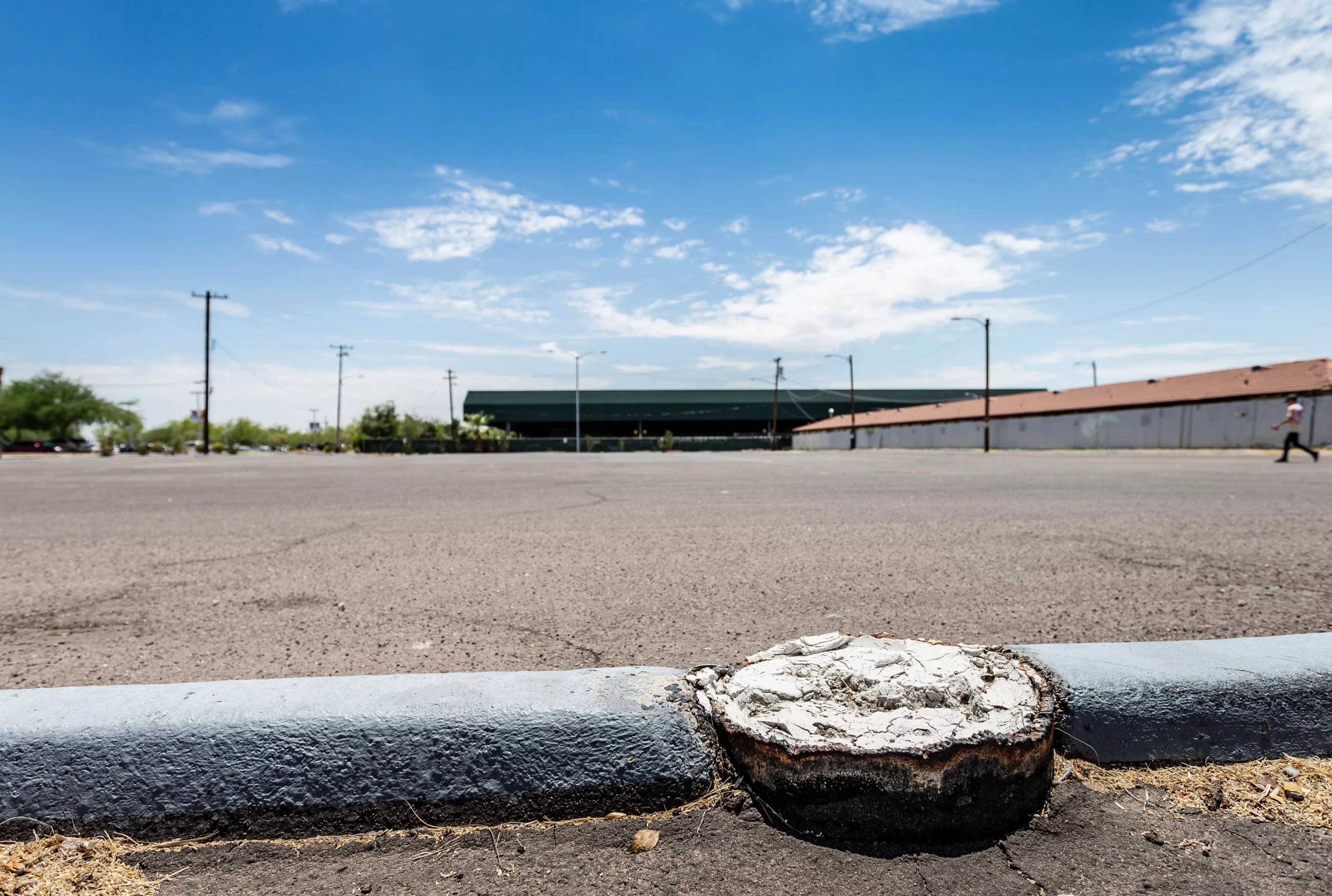
Bill Johnson’s is now a busy parking lot.
Charles Barth
Bill Johnson’s Big Apple / Parking lot
3757 E. Van Buren St. Opened in 1956, Bill Johnson’s Big Apple was a themed restaurant on Van Buren Street. The family-run eatery was the type of place with sawdust on the floor and a menu of chuckwagon-style selections. Johnson was a cowboy actor, stuntman and radio personality who had broadcast his show from the restaurant, with guests including Johnny Cash and Waylon Jennings.
But that’s not what everyone remembers – it’s more the large sign reading “Let’s Eat” in glowing neon. The Arizona Vintage Sign Coalition tried to preserve the sign when the restaurant was demolished, but instead, it joined a large collection of memorabilia at Raceway Bar and Grill in Maricopa.
Bill Johnson’s Big Apple grew into a small Phoenix chain, but the company filed Chapter 11 bankruptcy in 2014, losing its locations in Mesa and north Phoenix. Finally, the original location closed in 2015. The site was sold to Gateway Community College and is now a parking lot and busy thoroughfare for strolling college students and pedestrians.
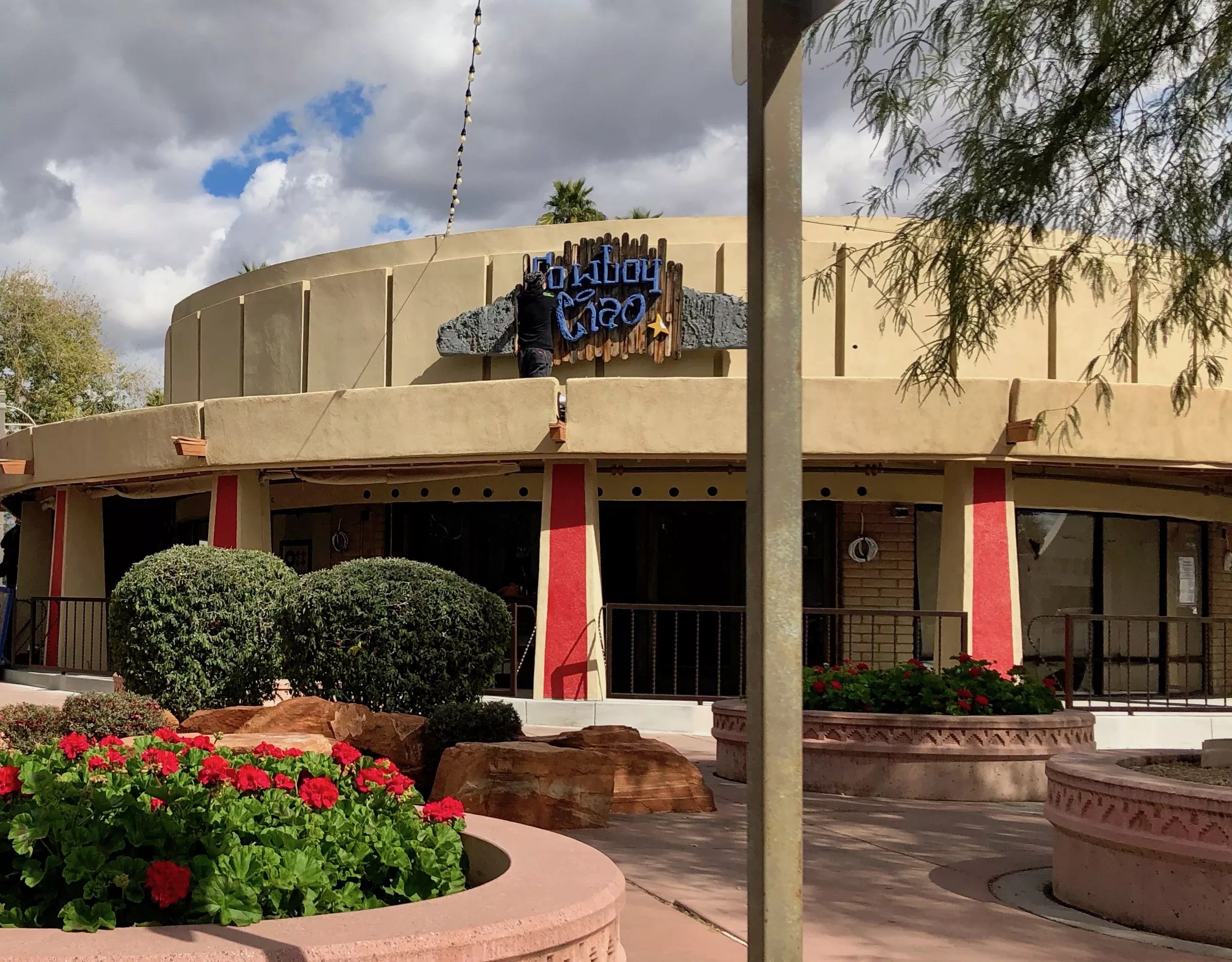
Then, Cowboy Ciao.
Lauren Cusimano
Cowboy Ciao / Unoccupied
7133 E. Stetson Drive, #1, Scottsdale Cowboy Ciao was a staple of Old Town Scottsdale, sitting on the northeast corner of Stetson Drive and Sixth Avenue. It opened in 1997, and inside, the place was Scottsdale to a T – white tablecloths but rustic decor, twinkle lights and saloon-style darkness, well-mannered diners mixed with rowdy spring training fans.
Owner Peter Kasperski closed the restaurant in October 2018. A major testament to Cowboy Ciao’s influence is chef Bernie Kantak’s Stetson Chopped Salad, which eventually inspired merchandise and a Facebook fan page. The dish continues to thrive on the adopting menus at Citizen Public House and The Gladly as the Original Chop.
In March 2019, the tiki-themed Drunk Munk opened in its place, serving seafood, sushi and tropical cocktails. That restaurant closed in summer 2025.
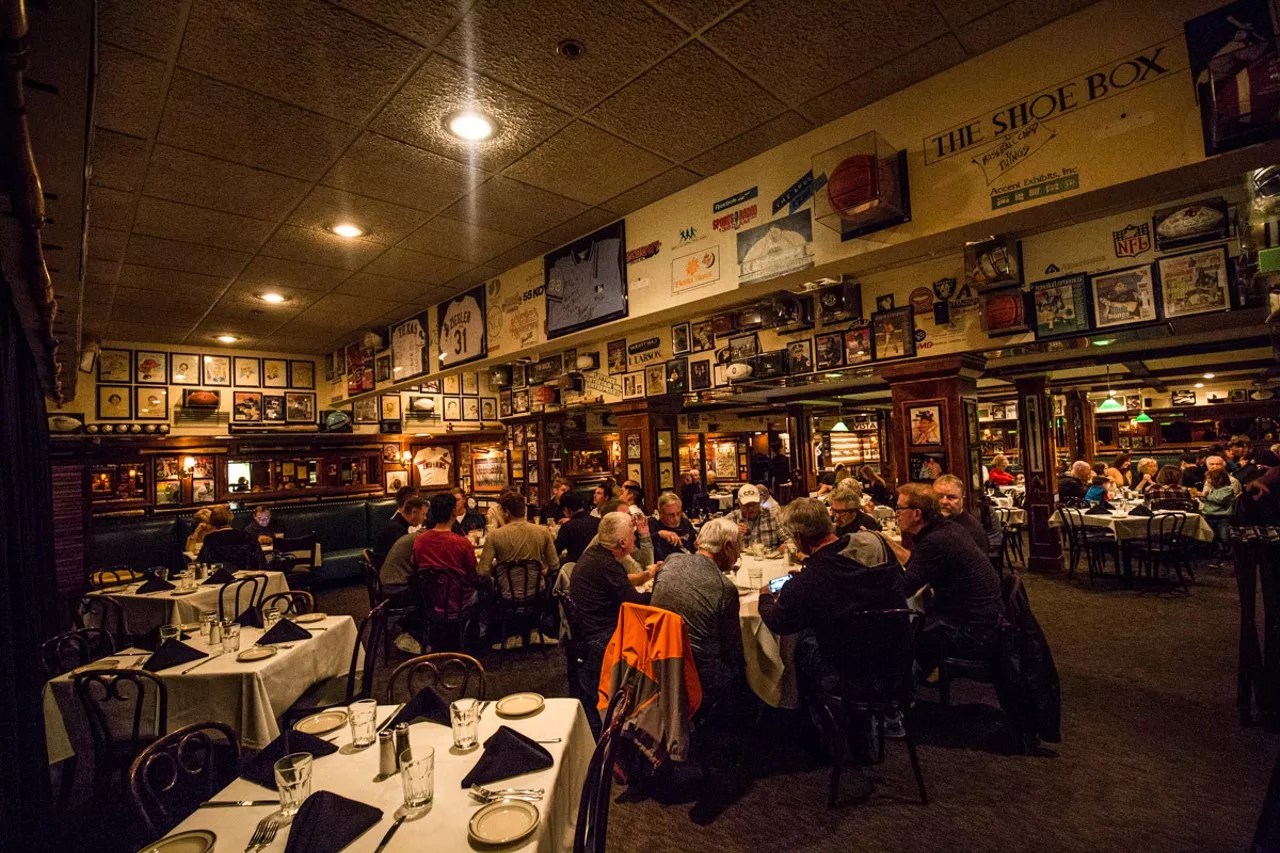
Then, Don & Charlie’s.
Jacob Tyler Dunn
Don & Charlie’s / Senna House
7501 E. Camelback Road, Scottsdale We once called Don & Charlie’s a reliable Old Town chophouse with a bit of a sports obsession. But as of April 2019, the Chicago-style restaurant and rib shack closed its doors after being in operation since 1981. The classic sports tavern thrived in what is now Scottsdale’s entertainment district for 38 years, slowly compiling a collection of sports memorabilia that became its signature.
There were framed jerseys, signed baseballs, trading cards and the classic restaurant owner move: photos of Don Carson pictured with various sports figures. The place also hummed with servers bringing out orders of Chicago-style fare, beer and old-school cocktails. Carson wanted to retire, and closed the place down.
Senna House, a boutique hotel, has sprung up on the lot. It includes the modern Mediterranean restaurant Cala.
Macayo’s on Central / Park on Central
4001 N. Central Ave. Macayo’s has a storied past, so let’s briefly recap. Woody and Victoria Johnson’s first establishment was the six-table Woody’s El Nido restaurant on McDowell Road in 1946. Then Woody’s Macayo opened in 1952, and in the late 1970s, the building got its Mayan-looking stair-step addition.
There it stayed, north of Central Avenue and Indian School Road, for years – even serving President Obama and family in 2009. Then the flagship Macayo’s moved across Indianola Avenue and reopened with a Midcentury Modern vibe in 2017 in a repurposed auto shop.
The spot where the restaurant was located is now a flat-faced apartment complex called Park on Central.

Then, Mary Elaine’s at The Phoenician.
The Phoenician
Mary Elaine’s / J&G Steakhouse at the Phoenician
6000 E. Camelback Road Ever heard of a purse stool? Over time, that is what The Phoenician’s former tenant, Mary Elaine’s, became known for – a pocketbook getting its own seat. Named for Mary Elaine Fette, the wife of big banker Charles Keating, Mary Elaine’s opened in 1988 with a hard-matched fine-dining vibe.
In addition to the French-inspired menu – think caviar and foie gras – there was a team of five sommeliers, a master sommelier and a 40,000-bottle wine inventory worth $3 million. The James Beard Foundation recognized chefs Alex Stratta, James Boyce and Bradford Thompson during their tenures.
After 20 years, the spot closed in 2008, then became and remains J&G Steakhouse.
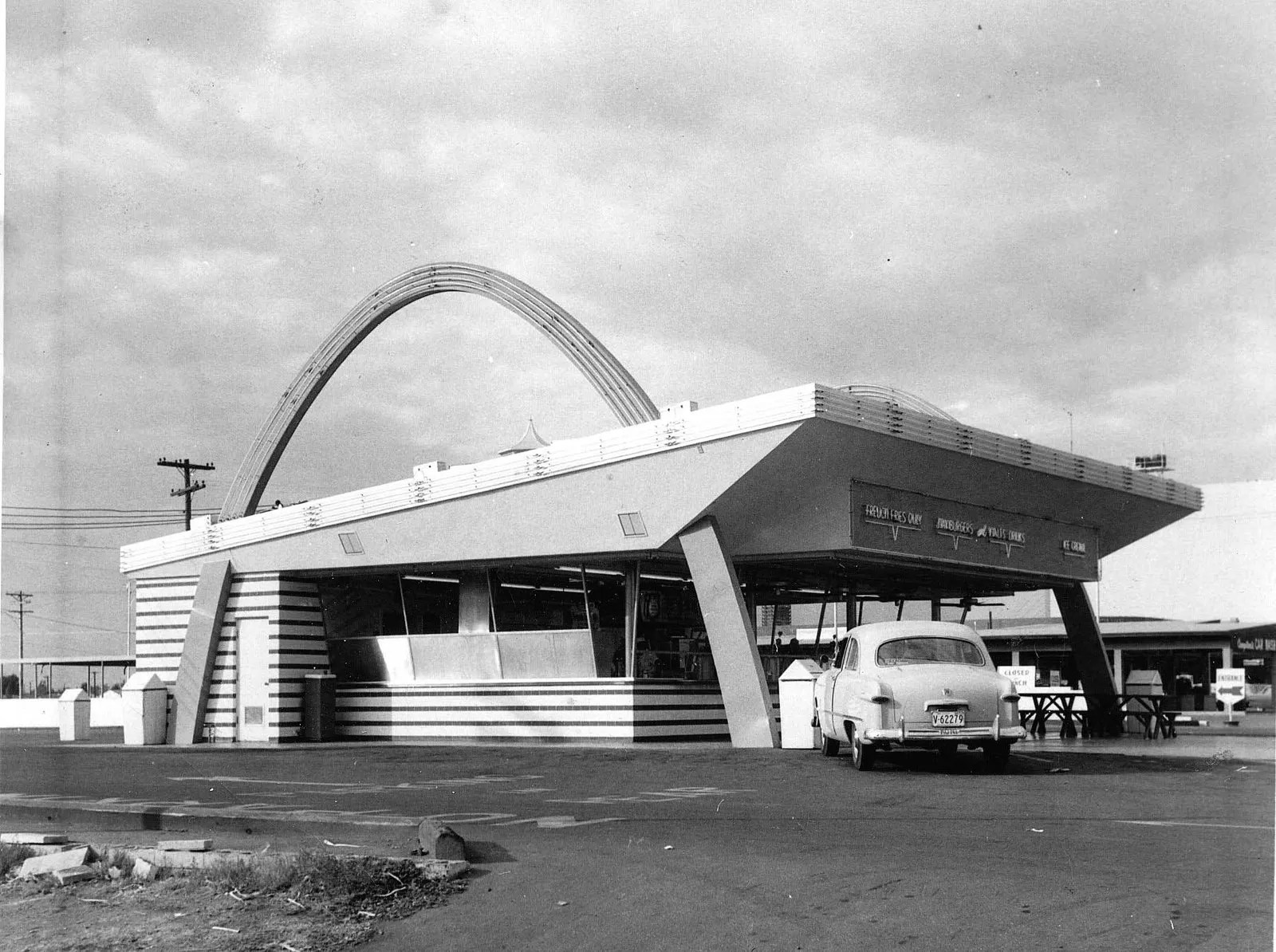
Then, the first McDonald’s franchise.
Bob Dreste/CC BY-SA 2.0/Flickr
McDonald’s / Yoshi’s
4050 N. Central Ave. Watch 2016’s film “The Founder” and you might get a shock: Phoenix was home to the first McDonald’s franchise. It was located north of Central Avenue and Indian School Road, and was the first of the Mickey D’s to feature the golden arches when it opened in 1953.
Designed by California architect Stanley Clark Meston, the arches were not part of the sign as we know now, but part of the building itself. The first to purchase a franchise license was Neil Fox of General Petroleum Corporation, along with some colleagues. They paid $1,000 and named it McDonald’s, a surprise to the brothers back in California, but it did lead to most succeeding restaurants to also be named as such.
The structure was demolished in the 1960s, and Yoshi’s now fills the spot.
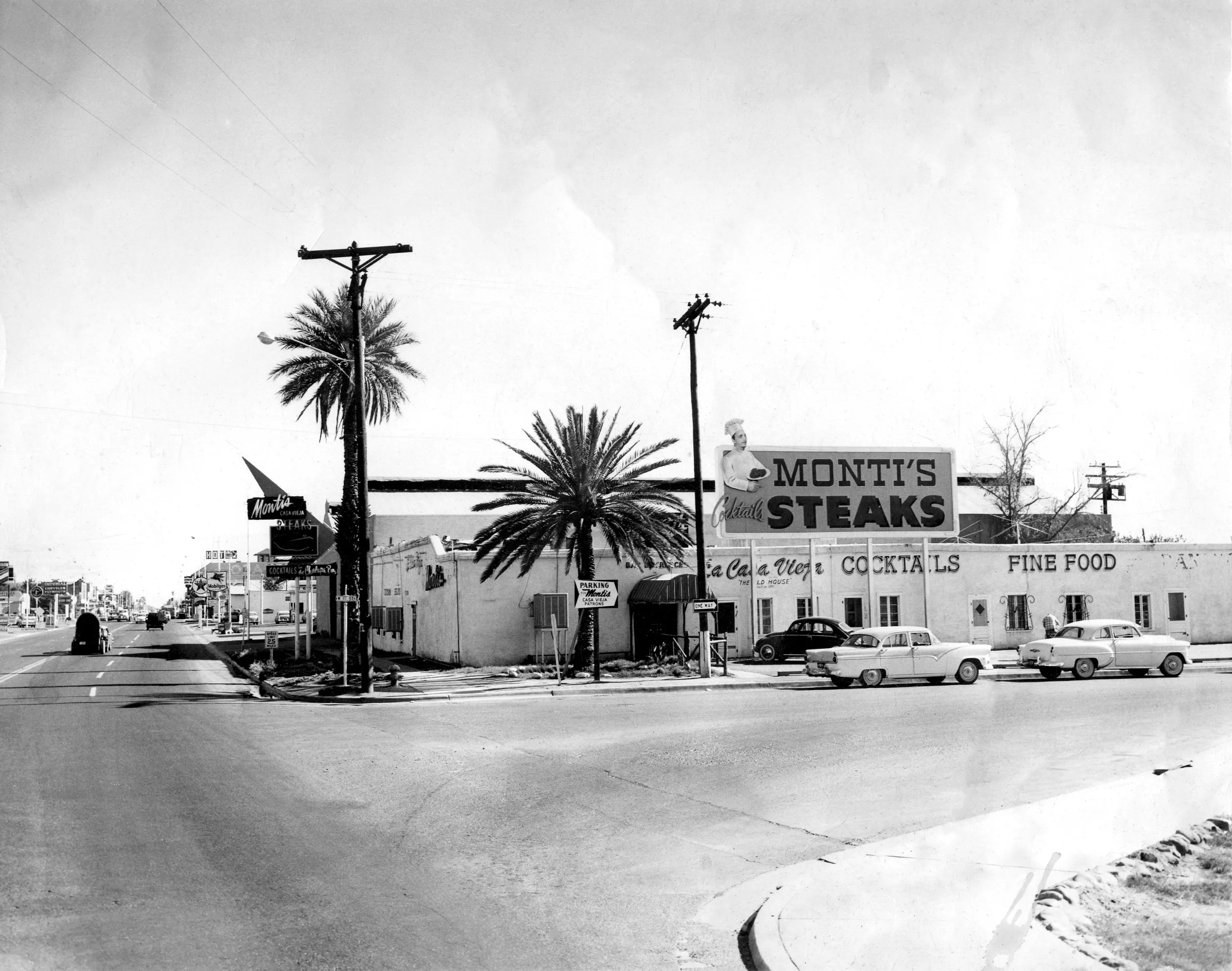
Then, Monti’s La Casa Vieja.
Tempe History Museum
Monti’s La Casa Vieja / Downtown Tempe Authority offices
100 S. Mill Ave., Tempe Known as Tempe’s oldest restaurant, Monti’s La Casa Vieja operated at the southwest corner of Mill Avenue and Rio Salado Parkway for nearly 60 years. In fact, it was also the oldest continually occupied building in greater Phoenix.
Monti’s was opened in 1956 by Leonard Monti, a military veteran and, later, a restaurateur. He’s the one who decided the Hayden House (the little abode where Arizona’s first U.S. representative, Carl Hayden, was born in 1877) would be the ideal site for a restaurant. The eatery became a classic dinner spot along Mill Avenue, serving prime rib and steaks to diners surrounded by Southwestern decor. Son Michael Monti took over in 1993 and ran the spot until it closed in 2014 because of rising operational costs.
In 2022, the historic structure was refurbished and is now used as the offices for the Downtown Tempe Authority.
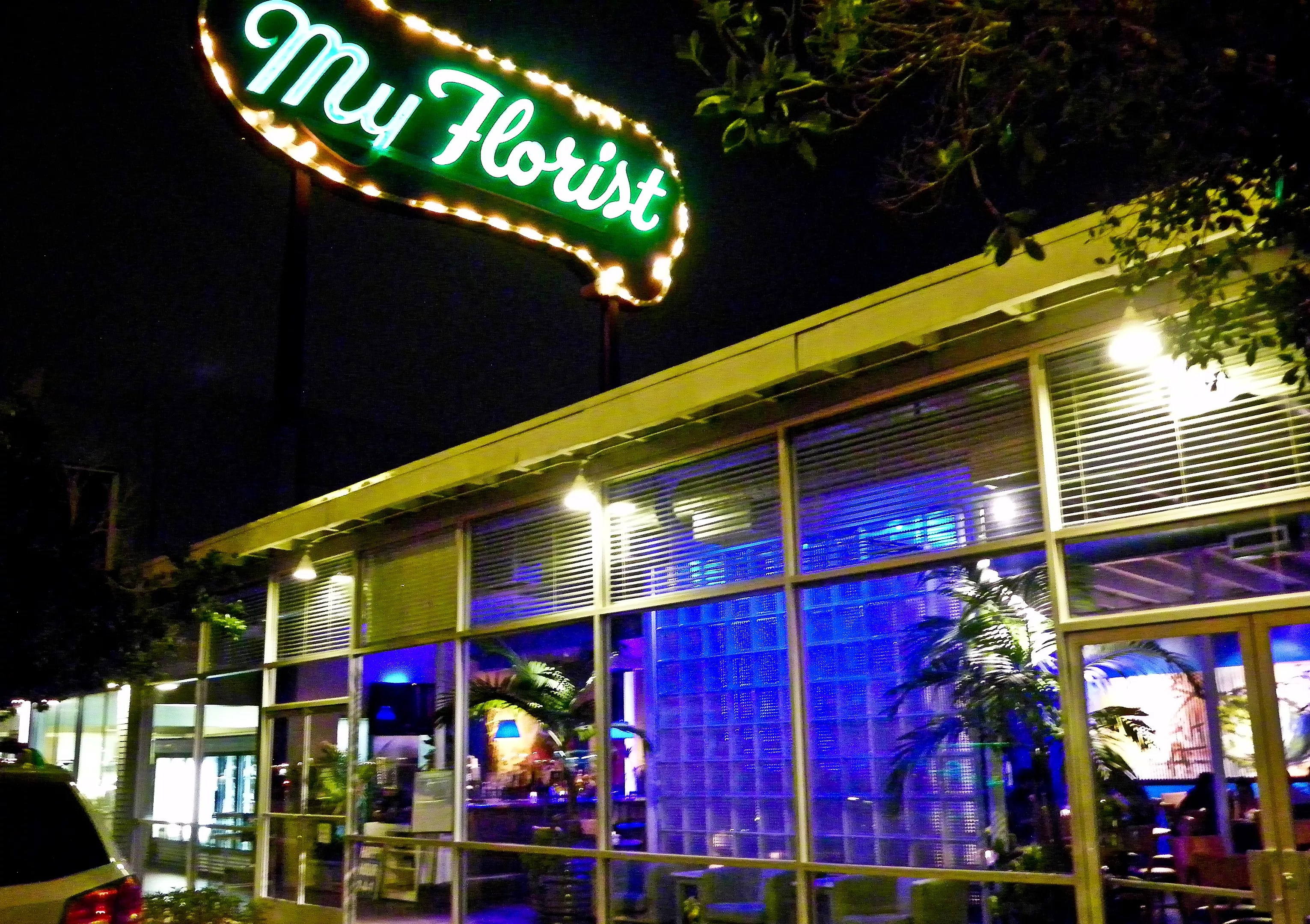
Then, My Florist Caf
Katherine Amy Vega/Kataklizmic Design
My Florist Café / Potbelly Sandwich Shop
534 W. McDowell Road Those who’ve recently moved to the Valley may have noticed the large, purple, retro-looking sign atop the plaza northeast of Seventh Avenue and McDowell Road. The sign for My Florist no longer advertises an actual tenant, but now instead, the plaza as a whole.
That’s because the bohemian-esque My Florist Café closed in 2010, but Glen Guyett’s artwork remains, thank goodness. The spot was a flower shop under the same name from 1947 to 1996, when it was morphed into My Florist Café by California land developer David Lacey.
A Potbelly Sandwich Shop now occupies the same suite.
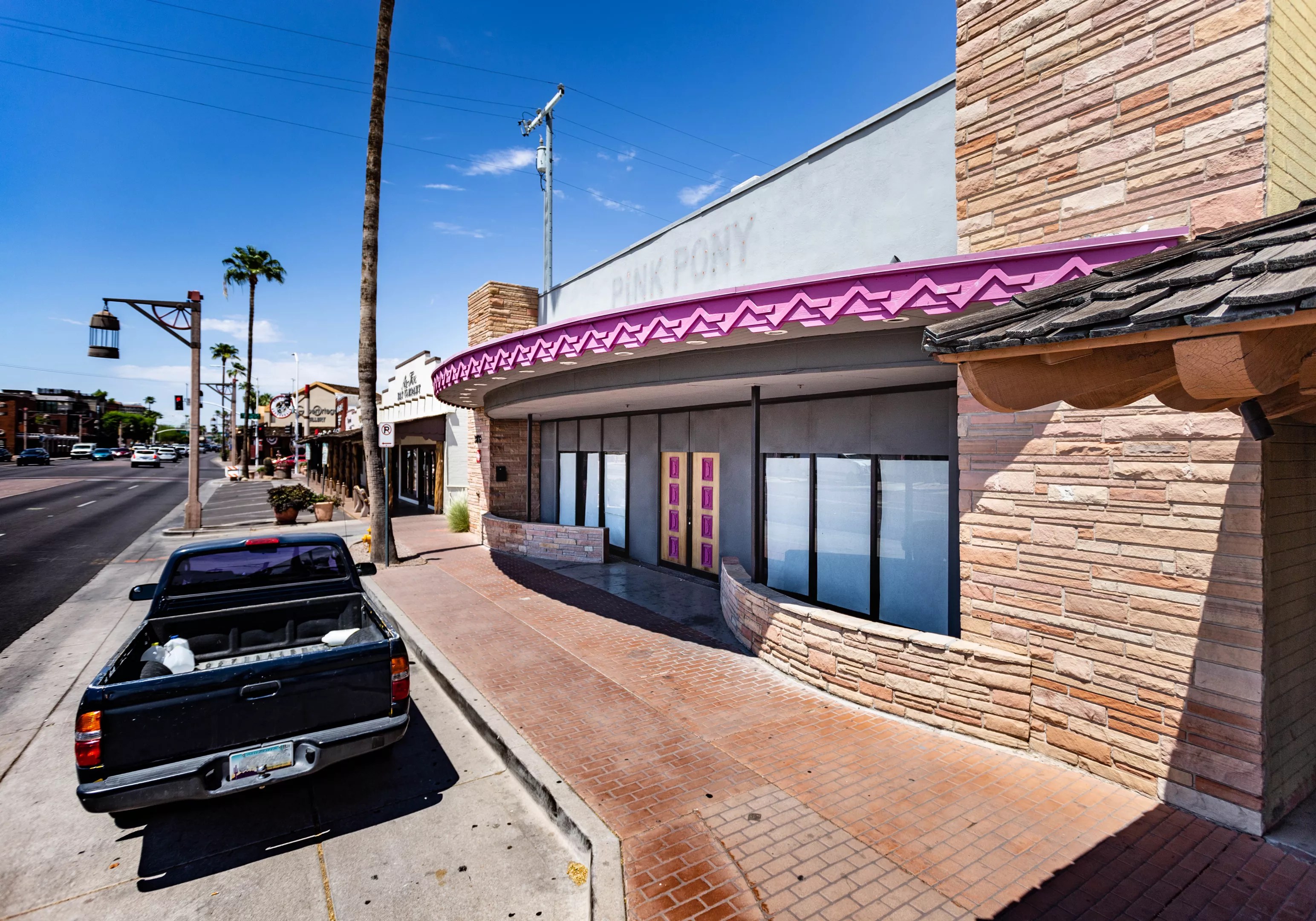
Now, the Pink Pony sit unoccupied.
Charles Barth
Pink Pony Scottsdale / Unoccupied
3831 N. Scottsdale Road, Scottsdale Where to begin with the Pink Pony, the old baseball fan and player hangout and steakhouse planted conspicuously in Old Town Scottsdale? Claudia Ogden opened the joint in 1947 at Scottsdale Road and Main Street (though it moved down a few suites in 1970), but it was immediately, and famously, sold to Charlie Briley in 1948, who ran it for five decades.
Hall of Famers Willie Mays, Mickey Mantle and Sandy Koufax were among its many famous diners. It closed in 2009, reopened in 2011 by Danny Little and Tim Smith and closed again in 2013. Though added to Scottsdale’s Historic Register in 2004, the old-school sports bar tried to modernize after being purchased by Mark Shugrue in 2013. Pink Pony closed for the third and final time in summer 2016.
Some of the decor was auctioned off in 2017, and the spot remains untouched.
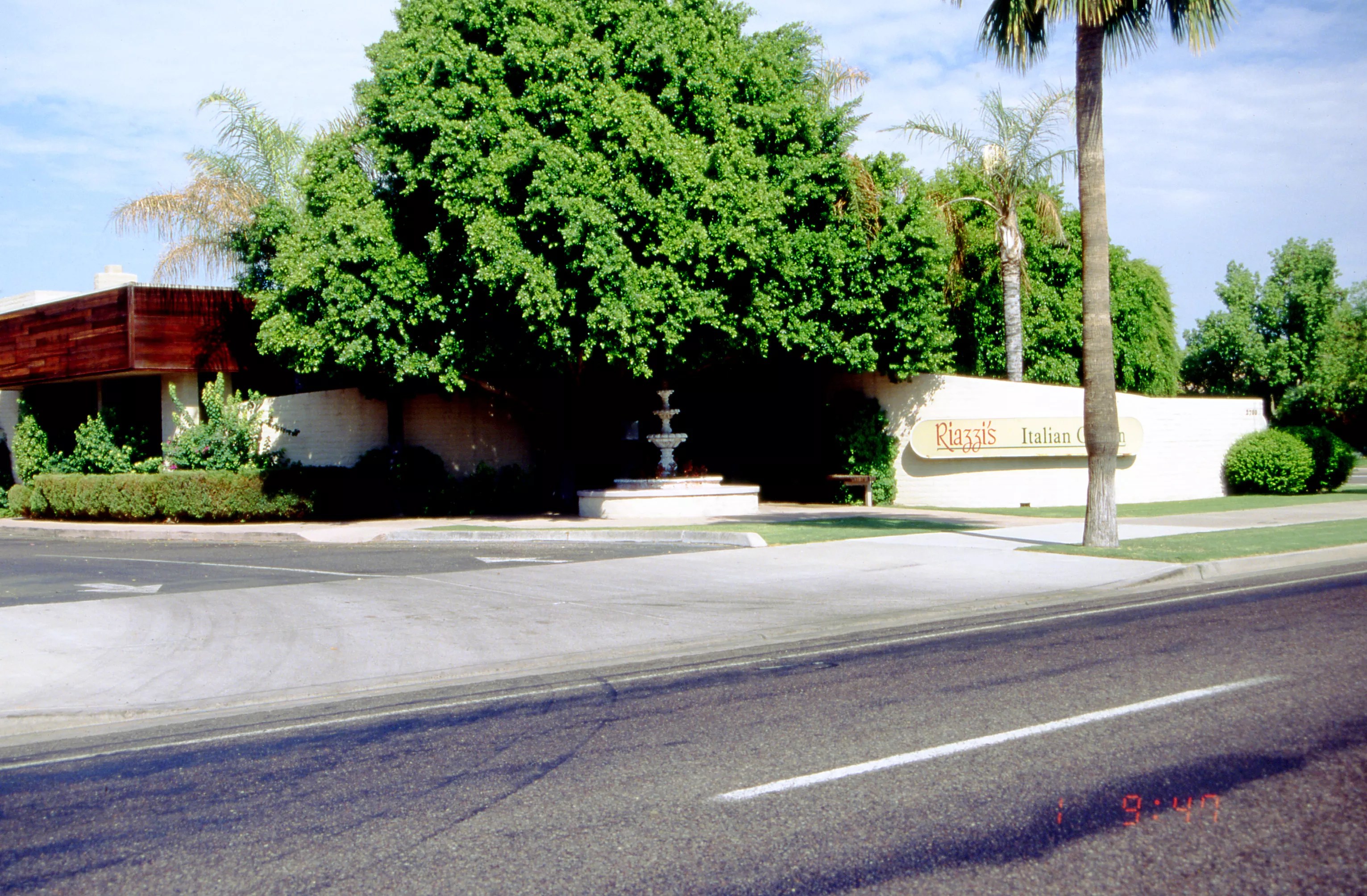
From 1989 to 2017, the building was home to Riazzi’s Italian Garden.
Tempe History Museum
Riazzi’s Italian Garden / Coming soon: Night Owl
2700 S. Mill Ave., Tempe Riazzi’s Italian Garden lit up the corner of Mill Avenue and Alameda Drive since 1989. But the family-owned Italian restaurant originally opened in 1945 at 15th Avenue and McDowell Road before moving to a second location at 53rd and Van Buren streets in 1947. The Tempe spot was its third and final destination until its closing in 2017.
But not much changed, food-wise. The spot then became Quartiere, Italian for “district” or “neighborhood,” and served traditional Italian food. From 2020 to 2023, the building housed The Golden Pineapple, and now, it’s set to become the second location of the south Scottsdale pizza bar Night Owl.
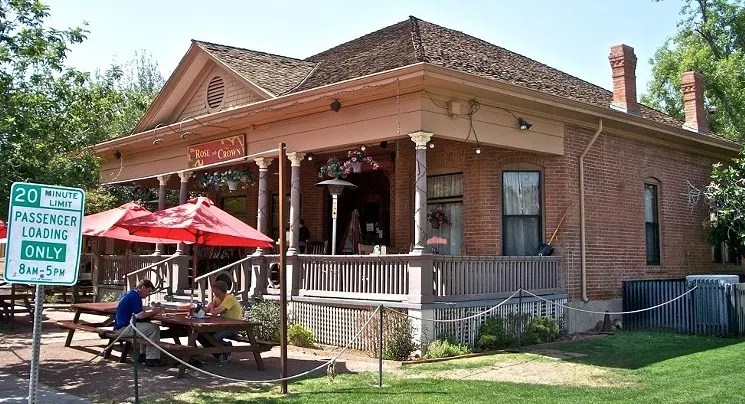
Then, Rose & Crown in Heritage Square.
Lilia Menconi
Rose & Crown / LATHA
628 E. Adams St. For years, the Silva House, built in 1900 in what is now Heritage Square, operated as the Rose & Crown – an English pub and haven for downtown drinkers, college students and soccer fans. There was a pool table, drink specials, a monstrous wall mural of humans with limbs certainly not to scale and funny smells patrons blissfully ignored after another pint. But then, Rose & Crown closed in 2018.
Swiftly, in spring 2019, the house became Anhelo Restaurant (though it was briefly under the name Hidden Kitchen), an upscale dinner spot with a soft, modern interior. Chef Ivan Jacobo’s restaurant since moved to another downtown Phoenix location before recently settling in Scottsdale. The old Rose & Crown is now home to the pan-African restaurant LATHA and accompanying boutique, The Diaspora Collective.
RoxSand Restaurant and Bar / Removed
2594 E. Camelback Road The Biltmore Fashion Park restaurant RoxSand operated as an upscale eatery from 1986 until it suddenly closed in 2003. Food & Wine magazine listed it as one of the top 25 restaurants in America, and it was named for chef and owner RoxSand Scocos McCreary – a James Beard Award-winning chef who was the first person to grace the cover of Bon Appetit magazine.
Inside, the decor was modern, fashionable, or “stark” as Zagat Southwest Top Restaurants Guide called it, with fancy light fixtures, expensive artwork and an international menu.
Stories of how McCreary closed the restaurant overnight without a word, to members of her staff or otherwise, are neither here nor there. Today, the site, as well as that second floor, no longer exists at the Biltmore.
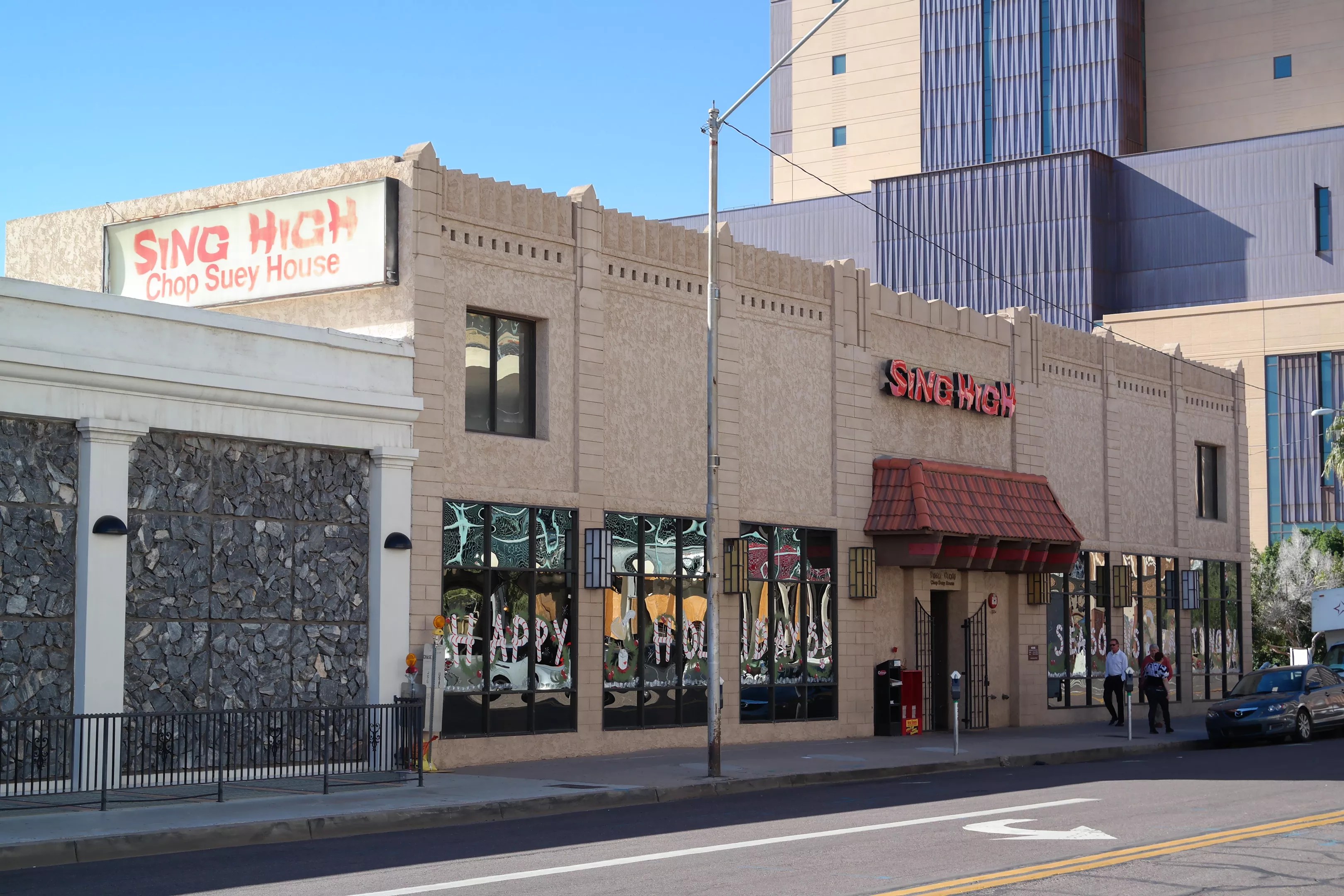
Then, Sing High Chop Suey House.
Visitor7/Wikipedia
Sing High Chop Suey House / Unoccupied
27 W. Madison Street This downtown staple was supposed to be named Shanghai Chop Suey House, but lines were crossed, something was misheard, and the sign read Sing High Chop Suey House for 90 years until it closed in 2018.
The Cantonese restaurant was opened in 1928 by the Lee family, who took to Facebook in the final days to actually mail out the restaurant’s decor, including menus and placemats, to former diners and fans. In the last days, guests began writing their names and memories on the walls of the downtown restaurant staple.
Today, Sing High Chop Suey House is closed tight.
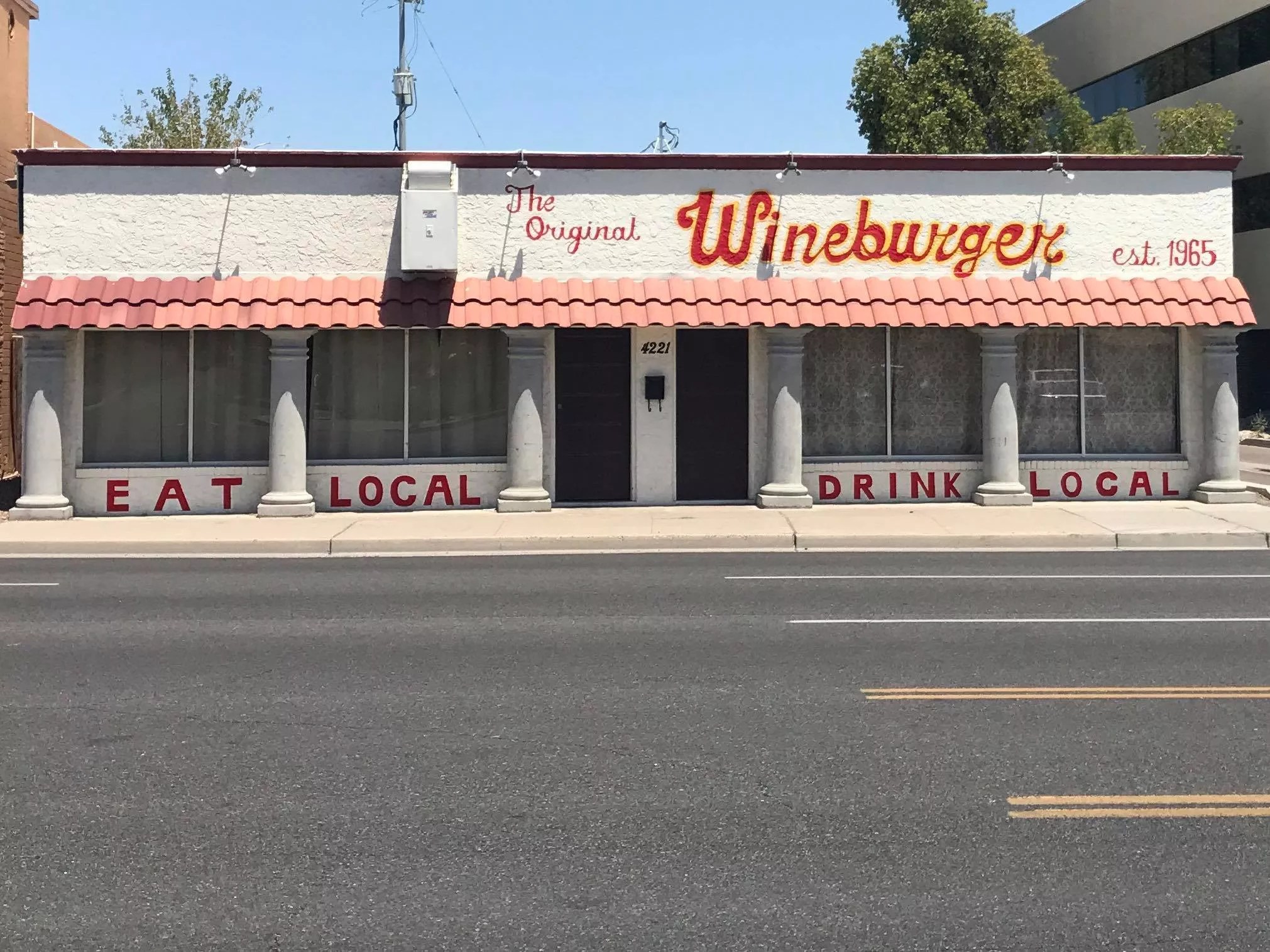
Then, the Original Wineburger’s location on Seventh Avenue.
The Original Wineburger Facebook
The Original Wineburger / Title 9 Sports Grill
4221 N. Seventh Ave. While the paint job on the Seventh Avenue location of The Original Wineburger had read “est. 1965,” this was actually its second site after relocating from a longtime spot at 19th Avenue and Bethany Home Road.
But the unassuming, single-story structure along the Melrose curve was previously home to Harley’s Italian Bistro, and, later, to Toasted – a place serving mostly grilled cheese. The same spot then became Short Leash Hotdogs & Rollover Doughnuts, from 2018 to 2024. After a colorful refresh, the space is now home to Title 9, the only dedicated women’s sports bar in the state.

Then, the Restaurant at Hotel Valley Ho.
Hotel Valley Ho
The Restaurant at Hotel Valley Ho / ZuZu at Hotel Valley Ho
6850 E. Main St., Scottsdal The quintessential example of Midcentury Modern architecture, Hotel Valley Ho was built in 1956 and has since offered some sort of on-site restaurant. In fact, the first one was called just that: the restaurant at Hotel Valley Ho.
In 1973, the Ramada chain acquired the hotel and the restaurant was named Summerfield’s. The spot is now ZuZu, named for a mother and grandmother cook who’d passed down a secret family recipe or two.
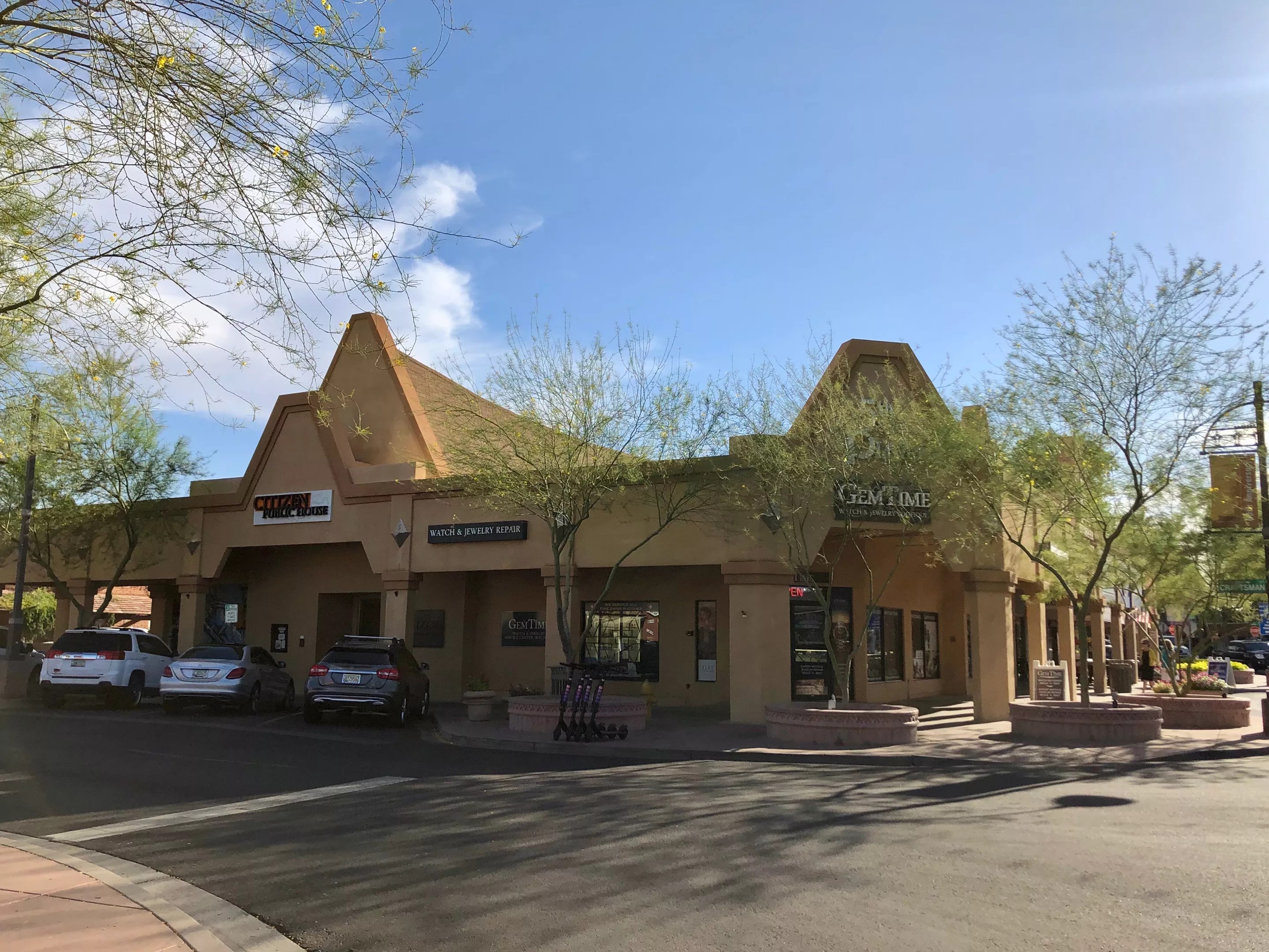
Now, Citizen Public House.
Lauren Cusimano
Trader Vic’s / Citizen Public House
7111 E. Fifth Ave., Scottsdale When tiki culture was hot in Phoenix (much, much more than it is now), Trader Vic’s was definitely the spot. The Polynesian-inspired chain mentioned by Warren Zevon and many others had a post in Old Town Scottsdale from 1962 to 1990 (and again at Hotel Valley Ho from 2006 to 2011).
Phoenix’s piece of the chain was one of roughly 25 around the world and offered costumed dancing and certainly drinking – especially of the signature mai tai cocktail. The spot is now Citizen Public House, and still marked by the structural steeple at the entrance off Fifth Avenue.
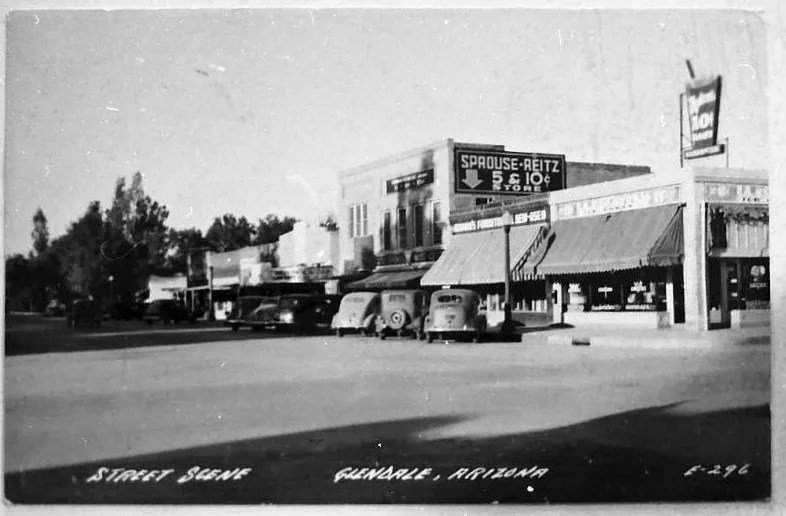
Then, Upton’s Ice Cream Parlor.
Glendale Arizona Historical Society
Upton’s Ice Cream Parlor / Status24
5754 W. Glendale Ave., Glendale You can’t spit in Old Towne Glendale without hitting a historic structure, not that you’d want to. Most of the restaurants in the historic downtown were something else entirely in the area’s classic American early days. But one place in particular seemed to have a clear vantage point – Upton’s Ice Cream Parlor.
Looking out onto the intersection of 58th and Glendale avenues, the ice cream and candy shop was a popular hangout in the 1940s. Neighboring the Sprouse-Reitz Building, Upton’s was usually packed with after-school kids, after-movie teens and after-work farmers.
The suite eventually became the apparel store Kathy’s Corner and Old Town Antiques, and is now the sneaker shop Status24.
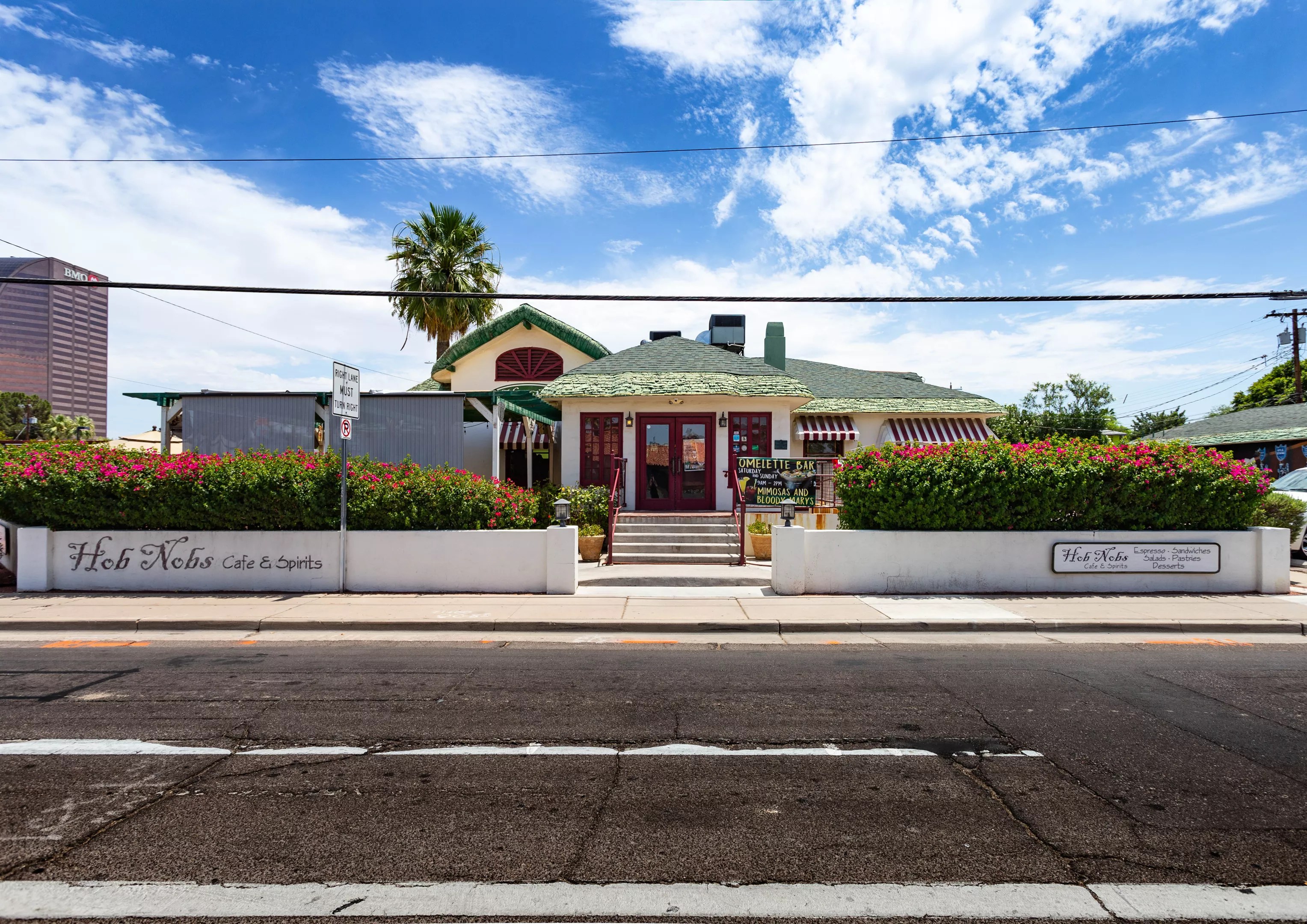
The Helen Anderson House has been home to many concepts since it was constructed in 1903.
Charles Barth
Willow House / Sauvage Wine Bar and Shop
149 W. McDowell Road The Willow House was a coffee shop and local artist hangout, housed in a 1903-built home on the corner of Third Avenue and McDowell Road. People drank coffee, chatted, lit up cigarettes, listened to music and read. It smelled like a head shop, the decor was a little low rent, and the service was probably friendly if you were a regular, not so much if you weren’t.
It was an especially happening spot in its time and place – the alternative ’90s and aughts. Plus, there was free Wi-Fi before that really became expected. It shuttered suddenly in 2008 over what was said to be rent disputes, but who really knows? The iconic bungalow became HobNob’s Food & Spirits, then Luana’s Coffee and Beer, and is now home to Sauvage Wine Bar and Shop.
Phoenix New Times would like to thank Marshall Shore for his assistance with research for this story. Editor’s note: This article has been updated from its original version.